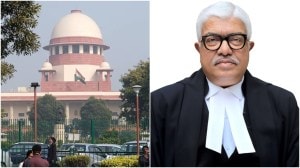Slight increase in property rates in NCR
Crisil Research has predicted that property rates are expected to rise by 2 to 3 per cent in 2010....
The real estate market in India which had witnessed an astounding fall during the second half of 2008 experienced a pickup in demand during the second half of 2009. Residential projects across cities saw several new affordable housing projects being launched by developers to attract mid-income buyers. Demand for houses mounted as the global economy improved bringing back financial confidence to the home buyers. End-users who had put their purchasing plans on hold due to the fall in affordability levels and job-related uncertainties,started booking houses. Going forward,these factors would continue to aid an improvement in absorption levels.
Average residential capital values which declined by 18-20 per cent in March 2009 from the highs witnessed during the first half of 2008,remained more or less stable between March and November 2009. On the contrary,Mumbai witnessed 11 per cent spurt in residential capital values. Going forward,in 2010 we expect capital values to witness a modest increase.
Mumbai to witness the steepest rise in capital values,Chandigarh sees maximum fall: Amongst the 10 cities covered by Crisil Research,Mumbai witnessed the steepest rise in capital values. During March – November 2009,in Mumbai,residential capital values increased by 10-15 per cent in most micro-markets. This hike was largely limited to regions of South Mumbai – Prime (Nepean Sea Road,Walkeshwar,Peddar Road),Western Suburbs (Bandra,Khar,Santacruz and Juhu) and Central Mumbai – Non-prime (Dadar,Matunga). On the other hand,in areas of Navi Mumbai (Kharghar),Thane (Ghodbunder Road) and downtown Central Suburbs (Dombivli and Kalyan),property prices stabilised due to huge overhang of ready housing units. Simultaneously,overall transactions saw an increase as end-users took advantage of the low interest rates and attractive deals offered by developers.
In contrast to Mumbai,Chandigarh witnessed a decline in capital values as a few micro-markets (Kharar,Mohali city – outside sectors,Zirakpur and Derabassi) remained under pressure due to excess supply owing to lack of investor demand and poor infrastructure facilities.
63 per cent of micro-markets witness either an increase or stable capital values: Of the 88 micro-markets studied by Crisil Research,55 of them have either witnessed an increase in capital values or stable capital values. Among the top 10 micro-markets that saw maximum increase in capital values,eight belong to Mumbai,while two are in NCR. Of the bottom 10 micro-markets,three belonged to Chandigarh and Pune each,two belonged to Chennai and one belonged to Hyderabad and NCR each.
OUTLOOK 2010
Crisil Research believes that demand for houses will improve marginally in 2010,backed by better job security owing to higher growth in the economy. Of the 10 cities Crisil Research is of the opinion that Bengaluru will witness maximum increase,whilst Ahmedabad will witness maximum fall. It is also expected that capital values will increase or remain stable in 88 per cent of micro-markets in 2010 and will fall in remaining 12 per cent. According to Crisil Research,capital values will fall further only in 12 per cent of the micro-markets in 2010. The remaining 88 per cent of the micro-markets will either witness stable capital values or increasing capital values. Of the micro-markets which will witness maximum increase we expect four of them to belong to Bengaluru,three to belong to Chennai and one each to Hyderabad,Chandigarh and Kolkata. On the other hand,we expect the drop to be particularly sharp (>10 per cent) in Derabassi and Zirakpur in Mohali district of Chandigarh on account of significant oversupply in these micro-markets.
Peak levels will not be reached even by 2010: According to Crisil Research,capital values witnessed during the first half of 2008 seem unachievable in 2010. Crisil Researchs forecast says that the peak capital values witnessed in 2008 may not be reached in the next one year,since we expect capital values to rise only marginally in 2010. Of the 88 micro-markets,only Chandigarh- Phase 1 and West Delhi are expected to reach their peak capital values.
The article is based on the findings of Crisil Research’s study,which covers the real estate scenario in 10 Indian cities





- 01
- 02
- 03
- 04
- 05


























